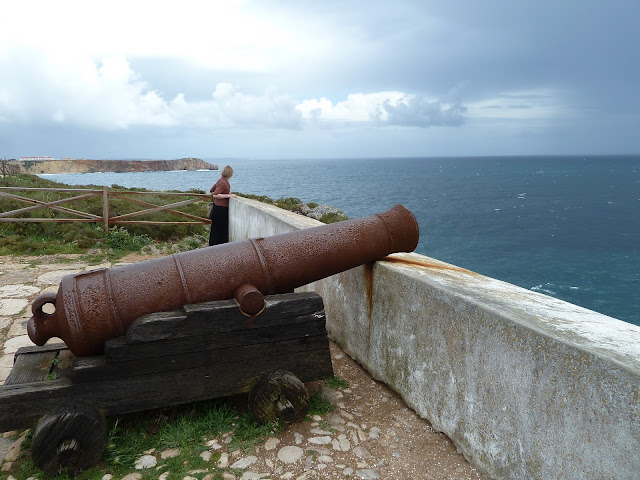Happy Valentine's Day from grey Germany!
Whether or not you celebrate it, "believe" in it or like it in general, I wish you all lots of love and smiles. Because that's what it really is about, right?
My boyfriend and I are pretty low-key about it, some fresh flowers and an "I love you" and I'm a happy girl. Chocolate for him (us) and a special dinner seals the deal.
In California step into any shop the day after New Year's and it looks like a violent eruption of pink, purple and red paper hearts caught the staff by surprise. Conversation candies and overpriced paper cartoonValentines take center stage. And for the men out there, I feel for you. The ball does tend to lie in your court on this one. :)
It's not all bad of course. Amidst all the cynics out there I tend to be a little more traditional and as far as I'm concerned what's wrong with some extra romance? Unlike the United States, here in Germany Valentine's Day doesn't whack you in the face every time you step out to buy some essentials. Most flower shops display a bouquet or two of red roses but other than that, it's not really marketed.
In fact, one might be able to entirely forget that Valentine's Day is in fact on February 14th without some discreet (or possibly very direct) reminders from their significant other.
The reason behind all of this probably has many answers. I'm sure studies have been conducted and I feel pretty confident assuming that it has to do with the no-nonsense attitude that seems positively genetic in most German people. But maybe the most prevalent reason, the one that's staring everyone in the face, is
Karneval.
Now before I go any further, let's get some background out of the way. My city lies in the western most point of Germany, hugging the borders of Belgium and the Netherlands. Aachen is a part of the state of North Rhine-Westphalia and cosseted between the two larger cities of Cologne and Duesseldorf.
This area is known collectively as the Rhineland, due to its proximity to the Rhine River. The people of this region have a special dialect and a unique culture, just like many other parts of Germany.
Karneval though, the likes of Mardi Gras and other similar celebrations around the world, is only celebrated in the Rhineland.
Ask 10 Germans how they feel about
Karneval and I guarantee about 50% of them will love it (they will probably be from Cologne) and the other 50% will absolutely hate it (they will not be from Cologne). This was my first
Karneval and to be honest, I think I'll have to side with the rest of Germany. Not exactly my cup of tea. For those of you wanting to know more about
Karneval check out this article:
The Local: Karneval in Germany.
Here's a brief summary.
Karneval celebrations date back to Roman times. In this area of Germany though, what we know today as
Karneval stems from the period after about 1820- otherwise known as Post-Napoleonic Germany. So it began as a way for the German people to mock the previous order, and the establishment. With all sorts of drunkenness, debauchery and blatant chaos.
The season starts on the 11th of November but the real party starts on
Fettdonnerstag (Fat Thursday) and continues until Ash Wednesday- when everyone stops drinking and behaving like adults again.
 |
| Parade on Rosenmontag |
The parade on Rosenmontag is perhaps the biggest highlight. People wear costumes- animals, clowns and cowboys all seem to be popular choices, and stand outside in the cold and snow for hours! The parade is an elaborate event, candy is thrown, people yell "Alaaf!" and that's that.
After
Karnival everything seems a bit quiet. Maybe that's why Valentine's Day is such a snooze here. Everyone is so tired from
Karnival how can they bear to tackle another one?
I was tired just like the rest of my city. So I haven't been cooking or baking much this week. Last week though one of my girlfriends invited a few of us over for dinner and I thought to myself, it's time for another cake!
This is my new favorite discovery in the form of baking inspiration. A seasonal magazine devoted entirely to cakes, cookies and other fabulous baked goods.
This recipe caught my attention as soon as I saw it.
 |
| German Cheesecake with Cherry Jam and Streusel Topping |
German Cheesecake or
Kaesekuchen is lighter and fluffier than traditional American or New York cheesecake. The reason for that lies in the filling. Whereas American cheesecake calls for cream cheese, Germans use quark. Quark is staple in any German kitchen. They eat in on bread for breakfast smeared with a thick layer of jam. You can buy varieties that have absolutely no fat at all, 20% fat, 40% fat and even some with herbs mixed in.
I've tried finding it in the States and though it's tricky I've found quark variations at specialty grocery stores and small markets. It's a bit pricy though (which is crazy because it's incredibly cheap here) but if you're willing to do a little leg work you can mix your own quark substitute pretty easily.
I'm still in the process of perfecting a substitute but here are your options.
Option 1: This option will require the least amount of effort. Mix nine parts ricotta cheese with one part sour cream. Voila! That should achieve the necessary texture and tangy-ness.
Option 2: Get yourself some plain full-fat yogurt (no flavorings here) and set it to drain for a day or two. (Use a coffee filter or some cheese cloth to separate the whey) Once it's fairly solid throw out the whey and use what's left of the yogurt as a substitute for quark.
Now on to the recipe.
Kaesestreuselkuchen mit konfituere
Streusel cheesecake with cherry jam
Recipe adapted from
Lecker Bakery, Special 2013 No. 1
Preparation time: 40 minutes
Baking time: 50-60 minutes
Ingredients:
3/4 cup cold unsalted butter plus extra for greasing the pan
2 1/3 cup all purpose flour plus 1 T
3/4 cup plus 1 cup granulated sugar
5 medium eggs
salt
1 small jar cherry jam (3/4 cup) (Any red, tart jam will do here. Just try to avoid using jam with seeds. The point we're aiming for here is color and tartness.)
1 3/4 pounds quark (or quark substitute)
1 packet of vanilla pudding powder
zest of one mandarin orange
1/2 c sliced almonds
1. Grease and flour a standard springform pan, set aside. Preheat your oven to 350 degrees F
2. For the dough: Mix the flour, 3/4 c sugar, the butter, 1 egg and salt in a mixer fitted with a dough hook. I find sometimes that it's easier to do this with a pair of clean hands so that I can evenly distribute the butter throughout the flour. Mix until the mixture resembles coarse crumbs. Divide the streusel in half, using one part for the crust and the other half for the streusel topping.
3. With your hands press half of the mixture into your prepared springform pan. Push the dough up the sides so you have about 2 inches in height. Spread the jam evenly over the crust.
4. For the filling: Mix the quark, 1 cup sugar, pudding powder and zest with a paddle attachment or handheld mixer until smooth. One at a time, add the remaining eggs, mixing thoroughly before adding another egg.
5. Pour the filling into the pan. Mix the almonds with the streusel topping and then sprinkle the mixture evenly over the filling.
6. Bake the cheesecake for 50-60 minutes. After the first 30 minutes cover the cake with foil to avoid over-browning. Once the cake is baked leave it in the oven with the door open for at least 10 minutes to cool. Remove the metal ring from the cake and allow to cool on a rack completely before serving.
Finally a cheesecake we don't have to feel guilty about! :)





















































